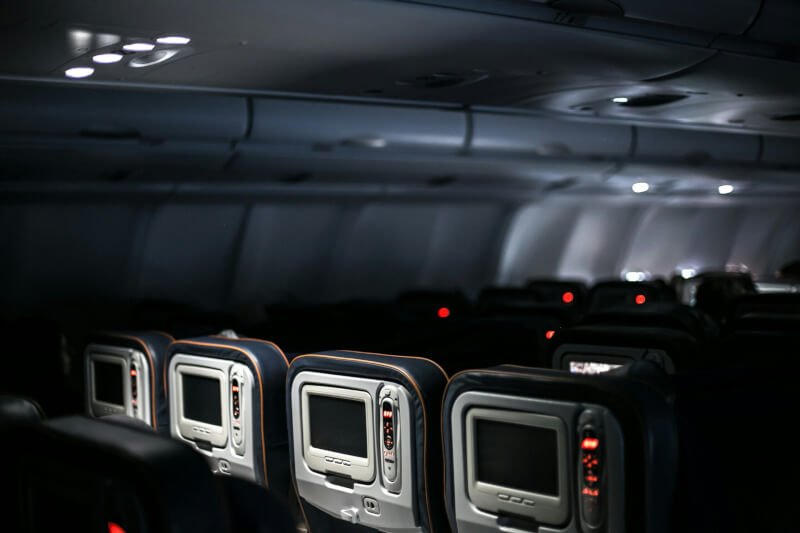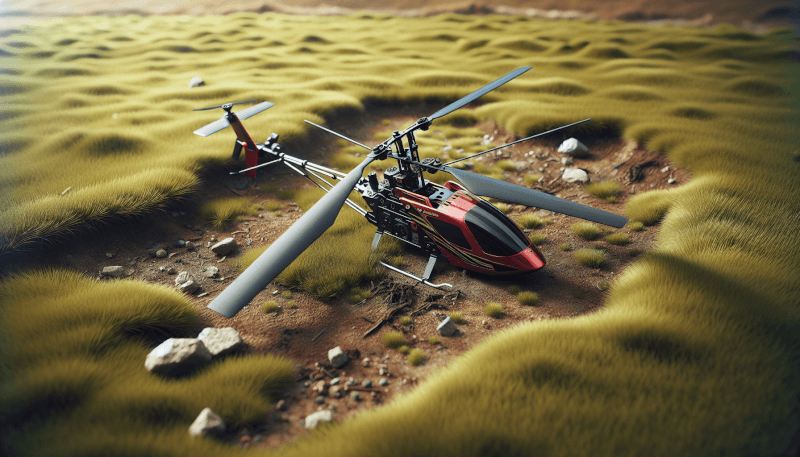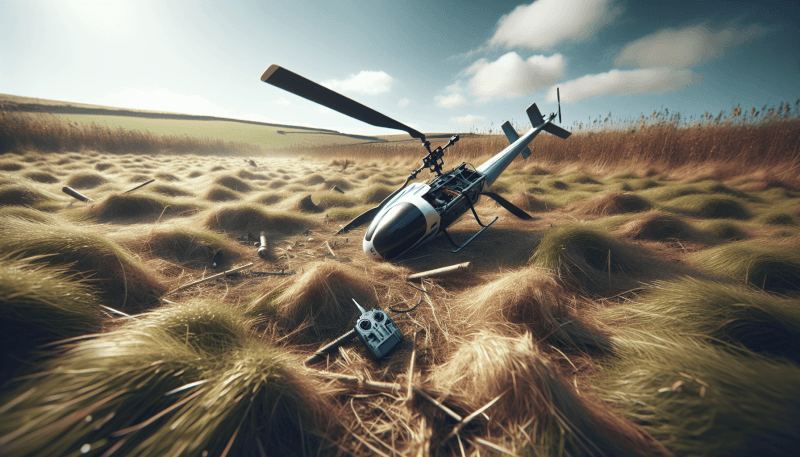Flying RC helicopters can be an incredibly exciting and rewarding hobby, but it can also come with its fair share of challenges. In this article, we will explore some of the most common mistakes that novice pilots tend to make when operating RC helicopters and provide practical tips on how to avoid them. By learning from these common errors, you’ll be well on your way to enjoying smooth and successful flights with your RC helicopter. So, let’s dive in and discover how to become a skilled and confident RC helicopter pilot!

Not Understanding the Basics
Flying an RC helicopter can be an exciting and rewarding hobby, but it’s important to understand the basics before taking to the skies. Ignoring the manual that comes with your helicopter is a common mistake that many beginners make. The manual is there for a reason and provides important information about how to properly operate and maintain your helicopter. By ignoring it, you may miss out on crucial instructions and safety guidelines.
Another mistake often made by beginners is neglecting proper pre-flight checks. Just like a real helicopter, RC helicopters require thorough inspections before each flight to ensure everything is in working order. This includes checking the battery, propellers, motors, and any other components that could affect the helicopter’s performance. Skipping these pre-flight checks can lead to unexpected issues mid-flight and increase the risk of accidents.
Lastly, skipping basic training is a mistake that can have serious consequences. RC helicopters can be tricky to control, especially for beginners. It’s essential to take the time to learn the fundamentals and practice in a controlled environment. By skipping this step, you’re setting yourself up for frustration and potentially dangerous situations. Take advantage of training programs or seek guidance from experienced pilots to ensure a safe and enjoyable flying experience.
Neglecting Battery Care
Proper battery care is crucial for maintaining the performance and longevity of your RC helicopter. Ignoring the battery capacity is a mistake that can result in unexpected shutdowns mid-flight. Each battery has a capacity rating that determines how long it will power your helicopter. By understanding and monitoring this capacity, you can avoid draining the battery completely, which could lead to a sudden loss of power and a potentially damaging crash.
Another mistake to avoid is overcharging the batteries. Overcharging can lead to excessive heat buildup, battery swelling, and even the risk of fire. Always follow the manufacturer’s instructions on charging times and use a reliable charger with built-in safety features. It’s also essential to store and transport your batteries properly to prevent damage and ensure their longevity.
Using damaged batteries is a dangerous mistake that should never be taken lightly. Damaged batteries can leak, overheat, or even explode, putting you and others at risk. Regularly inspect your batteries for any signs of damage, such as bulging, leaking, or frayed wires. If you notice any issues, dispose of the battery safely and replace it with a new one.
Ignoring Weather Conditions
Flying in RC helicopters is dependent on weather conditions that can greatly impact the safety and performance of your craft. Ignoring the weather is a common mistake that can lead to accidents and damage. Flying in strong winds is particularly risky as it can throw off the stability and control of your helicopter. High winds can easily sweep your craft away or cause it to crash into nearby obstacles. Always check the weather forecast before flying and avoid flying in windy conditions.
Operating in rainy or snowy conditions poses additional risks to your helicopter. Water can damage your helicopter’s electrical components, causing malfunctions or complete failure. Similarly, snow can accumulate on the rotors, making it difficult to maintain a stable flight. If you must fly in these conditions, ensure your helicopter is adequately protected from moisture and take extra precautions while flying.
Disregarding temperature limits is another mistake that can have serious consequences. Extreme temperatures can affect the performance and lifespan of your batteries and electronic components. Cold temperatures, in particular, can lead to reduced battery output and lowered flight performance. Avoid flying in extreme temperatures and always monitor the temperature of your helicopter during flight to prevent any issues.
Lack of Spatial Awareness
Maintaining spatial awareness is essential for safe and enjoyable RC helicopter flights. Flying your helicopter out of sight is a common mistake that can lead to crashes or loss of control. Always keep your helicopter within your line of sight to maintain control and react appropriately to any obstacles or unexpected situations.
Judging distance and altitude accurately is another skill that takes practice. Beginners often struggle with depth perception and may underestimate the height or distance of their helicopter. This can lead to collisions with trees, buildings, or other objects. Take the time to practice judging the height and distance of your helicopter in a controlled environment before attempting more complex maneuvers.
Losing orientation is a mistake that can cause disorientation and loss of control. When the helicopter is facing towards or away from you, it can be challenging to determine which way is forward or backward. This can result in incorrect control inputs and potentially disastrous consequences. To avoid this, use visual markers or orientation aids on your helicopter to help maintain a clear understanding of its orientation at all times.

Overcompensating for Movement
A common mistake many beginner pilots make is overcompensating for movement, leading to unstable flights. Overcorrecting controls is a mistake that can cause your helicopter to become erratic and difficult to control. It’s important to make small and precise adjustments to the controls rather than applying large and exaggerated inputs. This will help maintain stability and smooth flight.
Overreacting to wind gusts is another mistake that can throw off the balance of your helicopter. When faced with sudden wind gusts, it’s natural to panic and overcompensate with control inputs. However, this can lead to a vicious cycle of overcorrection and instability. Instead, remain calm and make small adjustments to counteract the wind gusts, allowing your helicopter to stay on course.
Excessive maneuvering is a mistake that can put unnecessary stress on your helicopter and increase the risk of crashes. While it’s tempting to perform flashy and complex maneuvers, especially when flying in front of an audience, it’s important to remember your limits and the limitations of your helicopter. Pushing your helicopter beyond its capabilities can result in loss of control, damage, or even complete failure.
Operating at High Speeds
Flying RC helicopters at high speeds can be exhilarating, but it’s important to understand the risks and limitations involved. Pushing the limits of your helicopter is a mistake that can lead to instability and loss of control. Each helicopter has a maximum speed that should not be exceeded to maintain safe flight conditions. It’s crucial to understand your helicopter’s speed capabilities and always fly within these limits.
Risking collisions and crashes is another mistake to be avoided. Flying at high speeds increases the chances of collisions with obstacles such as trees, buildings, or other helicopters. It’s important to maintain awareness of your surroundings and always give yourself enough space to maneuver safely. Avoid congested areas and practice responsible flying to minimize the risk of accidents.
Difficulty in control and navigation is another challenge that arises when flying at high speeds. As the speed increases, the responsiveness of your controls may decrease, making it more challenging to maintain precise control over your helicopter. Take the time to practice flying at higher speeds in a controlled environment to become comfortable with the increased demands on your piloting skills.

Ignoring Maintenance and Repairs
Proper maintenance and timely repairs are essential for the longevity and performance of your RC helicopter. Neglecting routine checks is a mistake that can lead to unexpected issues during flight. Regularly inspect your helicopter for loose screws, damaged parts, or any signs of wear and tear. By identifying and addressing these issues early on, you can prevent more significant problems from occurring.
Ignoring signs of wear and tear is a mistake that can lead to costly repairs or even accidents. Pay attention to any unusual noises, vibrations, or changes in performance. These can be indications of underlying issues that need to be addressed. Don’t ignore warning signs and seek professional help or guidance if you’re unsure about any aspect of your helicopter’s condition.
Failure to properly fix and replace parts is another mistake that can compromise the safety and performance of your helicopter. If you discover a damaged or broken part, it’s crucial to replace it with a suitable replacement. Using incompatible or subpar parts can lead to malfunctions or failures that can result in accidents. Always refer to the manufacturer’s instructions or seek professional advice for repairs and replacements.
Lack of Patience and Practice
Flying RC helicopters requires patience, practice, and a willingness to learn from mistakes. Expecting instant mastery is a mistake that can lead to frustration and disappointment. Becoming proficient in flying RC helicopters takes time and practice. Embrace the learning curve and enjoy the journey of improving your piloting skills.
Skipping regular practice sessions is another mistake that can hinder your progress. Practice is the key to developing your flying abilities and building muscle memory for precise control. Set aside dedicated time for practice sessions and focus on specific maneuvers or skills you want to improve. Make it a regular habit to ensure steady progress and a deeper understanding of your helicopter.
Impatience with the learning curve is a common trap that many beginners fall into. It’s important to remember that everyone progresses at their own pace and that mistakes are a natural part of the learning process. Embrace each mistake as an opportunity to learn and improve. By remaining patient and having a positive attitude, you’ll enjoy the journey of becoming a skilled RC helicopter pilot.

Flying in Restricted Areas
Flying in restricted areas is not only illegal but also dangerous. Ignoring no-fly zones is a mistake that can result in legal consequences and pose a risk to public safety. No-fly zones are put in place for a reason, such as protecting airports, sensitive areas, or crowded public places. It’s essential to research and abide by the local regulations and airspace restrictions in your area.
Trespassing private property is another mistake that can lead to legal issues and conflicts with property owners. It’s important to respect private property rights and obtain permission before flying on someone else’s land. Always fly in designated areas or seek permission from property owners to avoid any unnecessary conflicts.
Disregarding local regulations is a mistake that can have serious consequences. Different areas may have specific rules and regulations regarding RC helicopter flying, such as altitude limits, flight hours, or noise restrictions. Ignoring these regulations can lead to fines, confiscation of your helicopter, or even legal trouble. Take the time to familiarize yourself with the local regulations and fly responsibly within the established guidelines.
Improper Storage and Transport
Properly storing and transporting your RC helicopter is essential for its overall safety and longevity. Improperly packing and securing the helicopter is a mistake that can lead to damage during transportation. Always use a sturdy and protective case or bag specifically designed for RC helicopters. Securely pack your helicopter and ensure that all moving parts, such as the rotors, are adequately protected to prevent any damages.
Storing your helicopter in extreme temperatures can result in permanent damage to the battery and electronic components. High heat can cause the battery to degrade faster and lower its overall performance, while extreme cold can lead to decreased battery output and potential failure. It’s important to store your helicopter in a climate-controlled environment to protect it from temperature extremes.
Failing to protect your helicopter from damage during storage is a mistake that can lead to unnecessary repairs and replacements. Even when not in use, it’s crucial to keep your helicopter in good condition. Store it in a safe and dry place where it won’t be at risk of falling or being exposed to moisture. Regularly clean and inspect your helicopter to ensure all components are in good working order before each flight.
In conclusion, flying RC helicopters can be a thrilling and rewarding hobby, but it’s essential to take the necessary precautions and avoid common mistakes. Understanding the basics, taking care of your batteries, considering weather conditions, practicing spatial awareness, avoiding overcompensation, operating at safe speeds, maintaining your helicopter, developing patience and practicing regularly, respecting regulations, and properly storing and transporting your helicopter are all crucial for a safe and enjoyable flying experience. By avoiding these mistakes and adopting a responsible and diligent approach, you can maximize your enjoyment of this exciting hobby while ensuring the safety of yourself and others.



